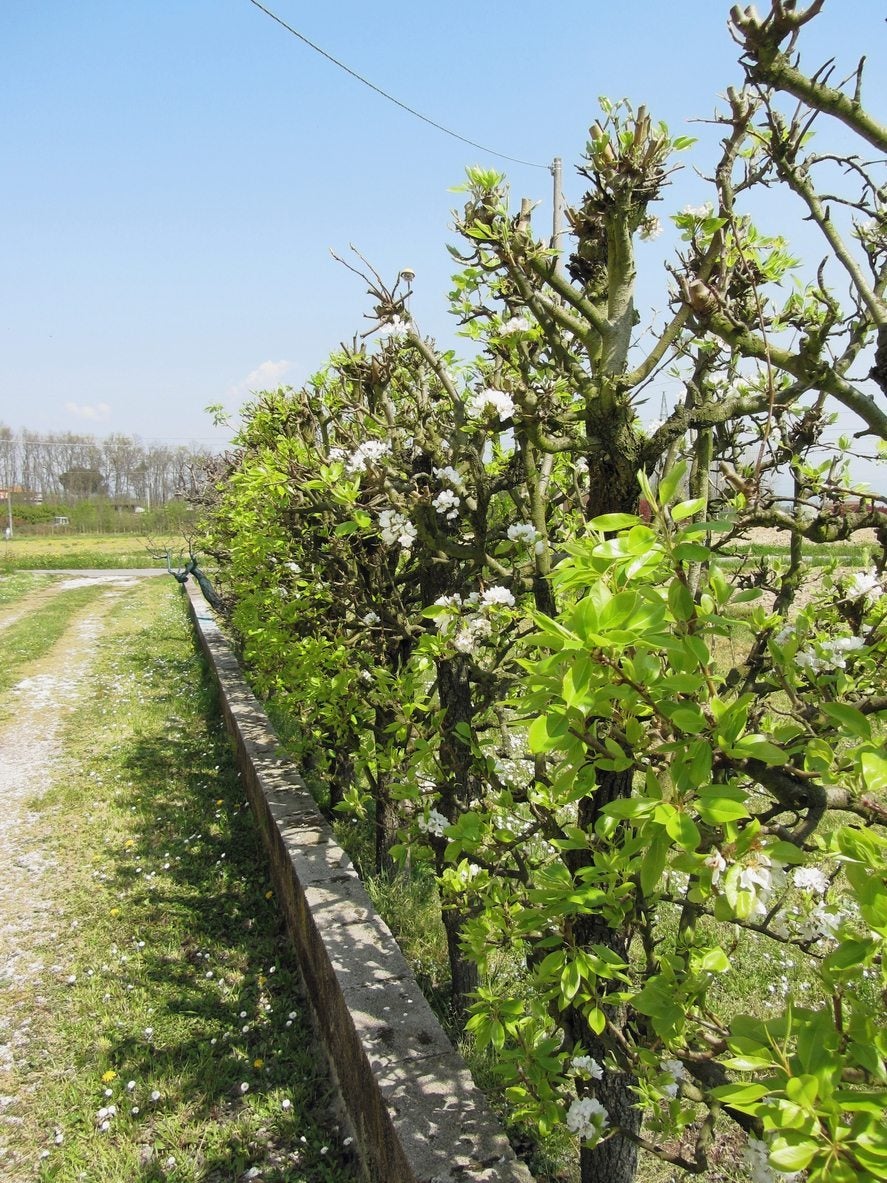
Can you imagine having a row of fruit bearing trees as a natural fence? Today’s gardeners are incorporating more edibles into the landscape including making hedges out of fruit trees. Really, what’s not to like? You have access to fresh fruit and a natural, beautiful alternative to fencing. One of the keys to successful fruit tree hedges is correct fruit tree hedge spacing. Intrigued and want to know how to plant a fruit tree hedge? Keep reading to find out about making a hedge out of fruit trees and how close to plant fruit trees.
How to Plant a Fruit Tree Hedge
When considering fruit trees to use as hedging, it is best to stick with dwarf or semi-dwarf varieties. Larger trees can be pruned down to restrain their size, but then you are constantly pruning. All kinds of fruit trees can be used to create a hedge from cherries to figs to apples to citrus. Be sure to plant trees that are suitable for your region. Your local extension office can help you with information about trees that are adapted to your USDA zone. When making a hedge out of fruit trees, consider how high you want your hedge. Most hedges will look their best and produce the most fruit when allowed to get to their natural height. If what you want, for instance, are plums that are going to end up being too high, consider alternatives such as bush cherry plums, which grow into more of a shrub and are, thus, much shorter than a plum tree.
How Close to Plant Fruit Trees
The spacing for a fruit tree hedge depends upon the type of training system used as well as the specimen. If you want a thick, dense hedge, dwarf rootstocks can be planted as close as 2 feet (61 cm.) apart. Spacing for a fruit tree hedge using super-dwarf rootstock can be planted even closer still, as close as a foot (31 cm.) apart. Trees planted that close will need a little extra TLC in the form of additional irrigation and fertilizer since they are competing for nutrients. If you choose to train the trees into an espalier, you will need room for the widely splayed branches. In this case, trees should be spaced about 4 to 5 feet (1-1.5 m.) apart. If you are training the trees to espalier vertically, they can be planted as close together as the above hedge trees. Also consider pollination when thinking about spacing for a fruit tree hedge. Consider the distance from other pollination sources. Many fruit trees require pollination from another variety of the same fruit. You may have to plant another tree nearby or mix several varieties of fruit into the same hedge. Remember, pollination partners need to be within 100 feet (30.5 m.) of each for best results. Plus, while their bloom cycles don’t need to be the same length, they do need to overlap.
Sign up for the Gardening Know How newsletter today and receive a free copy of our e-book "How to Grow Delicious Tomatoes".

Amy Grant has been gardening for 30 years and writing for 15. A professional chef and caterer, Amy's area of expertise is culinary gardening.
